Sustainability For Kids: A Kitchen Compost Project
Teaching kids about sustainability doesn’t have to be boring—it can start right in your kitchen! A kitchen compost project is a hands-on way to introduce children to eco-friendly habits, science concepts like decomposition, and the importance of reducing waste. In this guide, we’ll walk through how to teach sustainability for kids by creating a simple kitchen compost pit with your little ones. This activity not only educates kids about waste management but also instills a sense of responsibility towards our planet.
Sorting Waste
Biodegradable vs. Non-Biodegradable
Begin by involving your child in sorting household waste. This activity helps them understand the difference between biodegradable and non-biodegradable materials
Science Concepts
Kid-Friendly Task: Turn sorting into a game! Have them shout “Nature Food!” or “Trash Monster!” as they drop items into the right bin.
- Biodegradable: Items that break down naturally (vegetable wastes, fruit peels, eggshells, coffee grounds, tea dust etc).
- Non-Biodegradable: Things that won’t decay (plastic wrappers, glass, metal).
Hazards of Non-Biodegradable Waste
While separating the kitchen waste, my kid asked me why we weren’t adding the plastic wrappers. I explained that tiny microorganisms in the eat fruit and veggie scraps just like we eat our food. We don’t eat plastic, right? In the same way, they don’t eat plastics either!
Also I told plastics can leach harmful chemicals into soil and water, affecting all living things . Teaching kids about these concepts emphasizes the importance of reducing, reusing, and recycling.
Collect Kitchen Scraps for Compost

List of Compost-Friendly Waste:
- Fruit/veggie scraps (no citrus or onions—they’re too acidic!)
- Coffee filters/tea dust
- Crushed eggshells
- Stale bread
Avoid: Meat, dairy, or oily foods (they attract pests).
Digging the Compost Pit

In your garden, dig a pit approximately 12 to 18 inches deep. A deeper pit (about the length of a ruler!) keeps the compost moist, warm, while preventing pests from accessing the compost .
Kid’s Role: Hand them a small shovel to help dig. Involving your child in digging the pit can be a fun and educational experience, teaching them about soil layers and the importance of physical activity in gardening.

Layering the Pit
Kitchen Scraps + Dried Leaves
The Recipe for Perfect Compost:

Wet Layer: Add kitchen scraps (“green waste” – rich in nitrogen).

Dry Layer: Toss in dried leaves or shredded newspaper (“brown waste” – high in carbon).

Ratio: Aim for 2 parts brown to 1 part green.
Why Brown Waste?
Composting requires a balance of carbon-rich “browns” and nitrogen-rich “greens.” Dried leaves provide carbon, which helps in the decomposition process and prevents odors.
Water, Mix, and Cover!

Water the compost: Ensure the pile remains moist, akin to a wrung-out sponge.
Mix the contents: Use a stick to aerate the compost, facilitating faster decomposition.
Cover with soil: This helps retain moisture and heat, essential for microbial activity.

Mark the area: Use bricks or stones to outline the compost pit, preventing disturbances.
Quick Recap
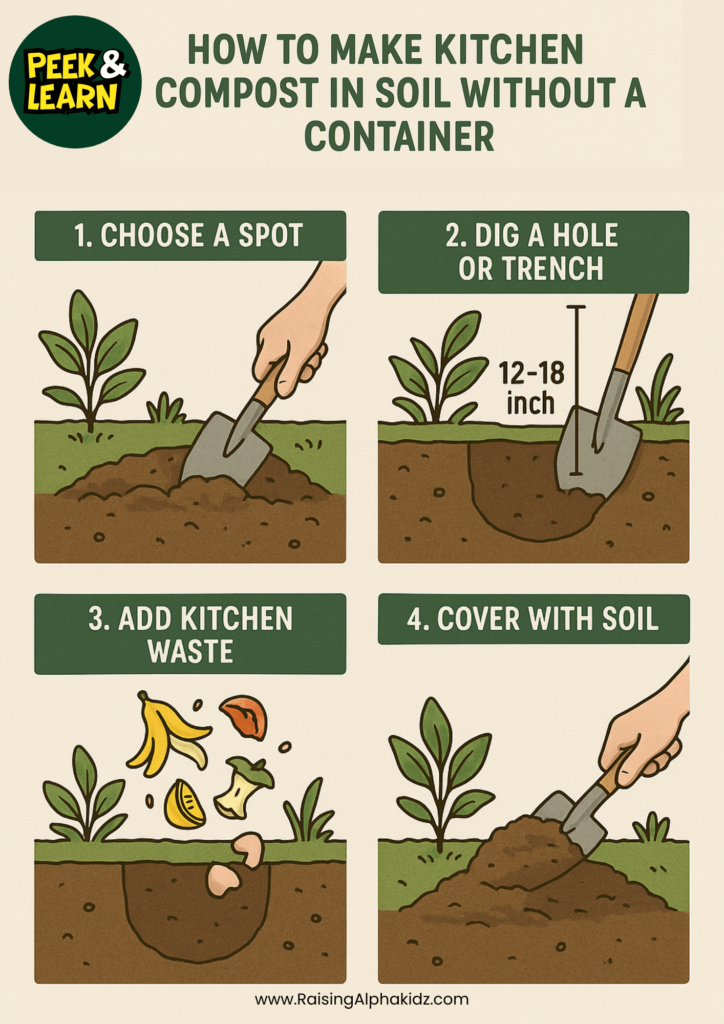
Adding More Waste
You can continue to add kitchen scraps to the compost pit. However, it’s advisable to do so in batches, allowing each layer to decompose adequately. Regularly turning the compost and maintaining the brown-to-green ratio ensures efficient decomposition
How to Use Compost in Your Garden
Once your compost turns dark and crumbly (like chocolate cake!), spread it around plants. This “black gold” can be used to enrich your garden soil, promoting healthy plant growth.
Explain how it acts as a “vitamin boost” for soil, helping veggies grow bigger to your kids!
What Kids Learn From This Project
Engaging in composting teaches children:
- Scientific Principles: Understanding decomposition, nutrient cycles, and the role of microorganisms.
- Environmental Responsibility: Recognizing the impact of waste and the importance of sustainable practices.
- Life Skills: Developing habits of patience, observation, and care for living things.
- Science: Decomposition, ecosystems, and recycling nutrients.
- Critical Thinking: Why plastic harms oceans? How compost fights climate change?
Why Teach Sustainability Early?
Kids who grow up eco-aware become adults who make greener choices. Early education fosters a sense of responsibility and empowers kids to make environmentally conscious decisions. Plus, it’s empowering—they see their actions matter!
Other Sustainable Activities for Kids
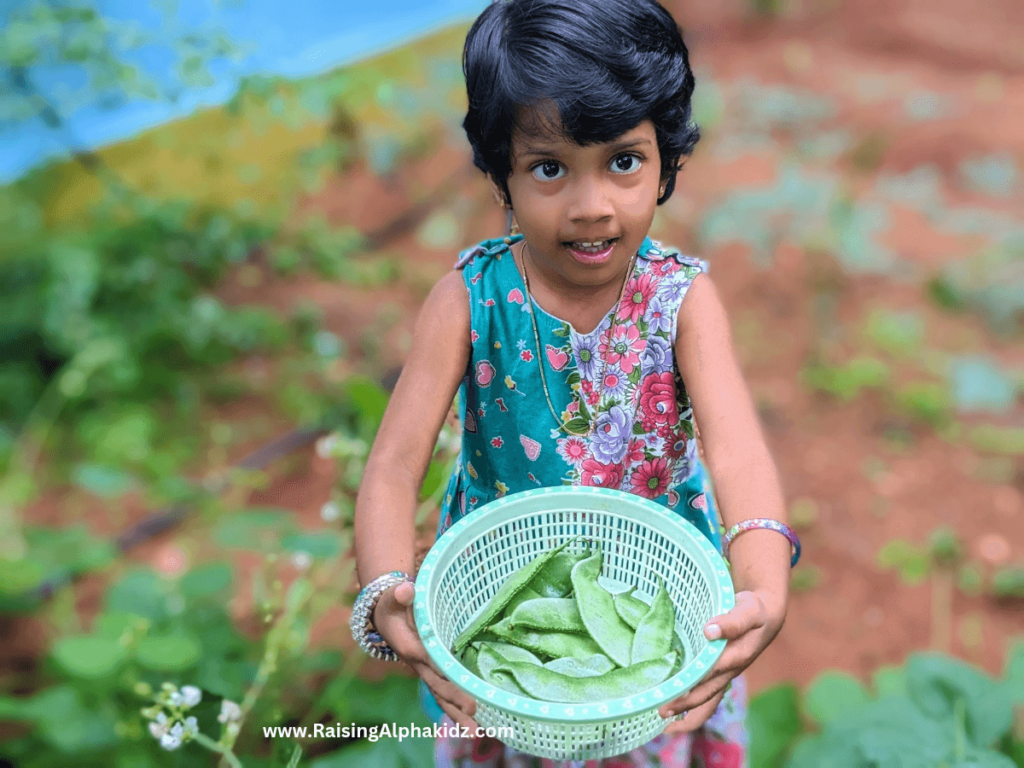
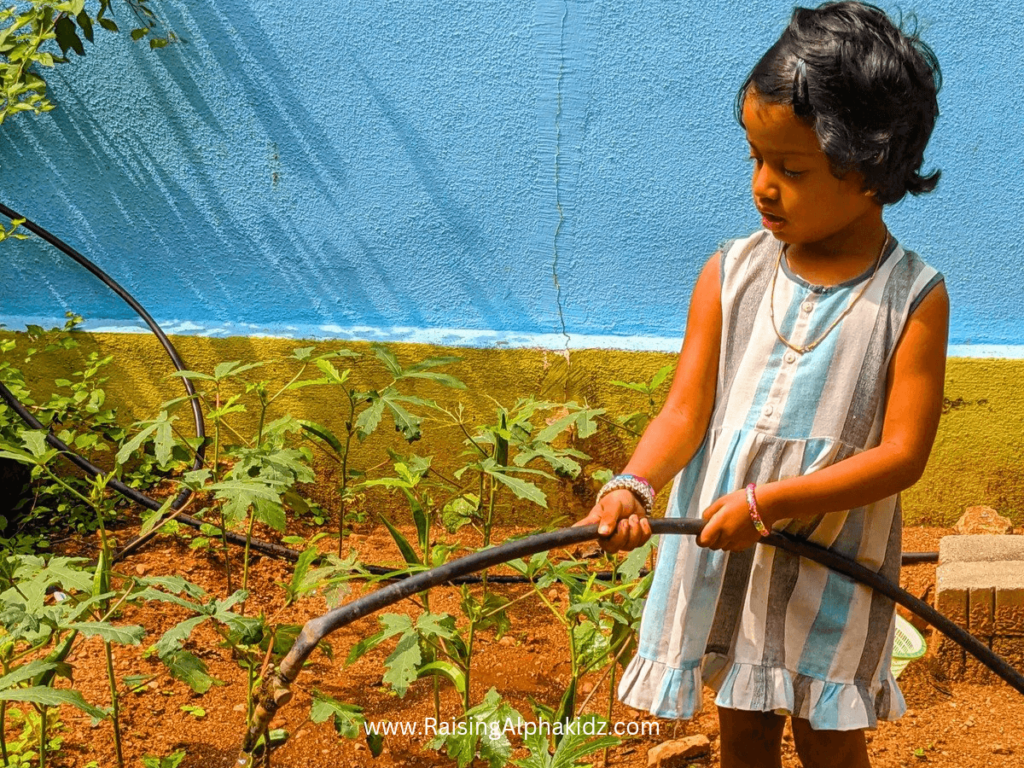
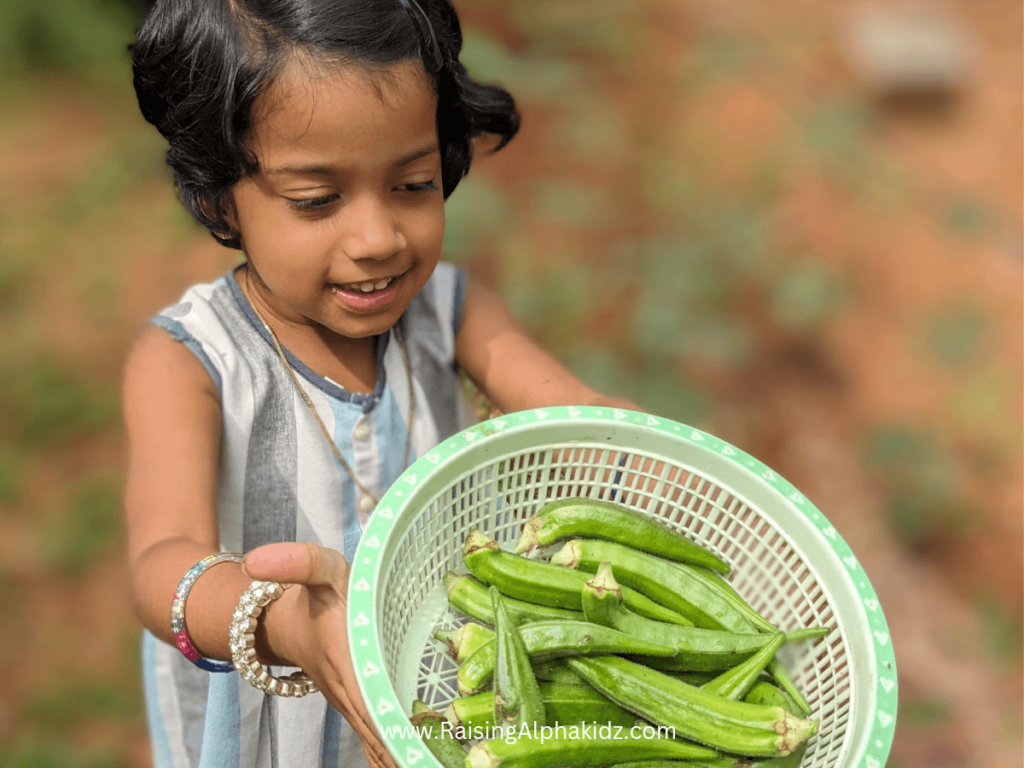
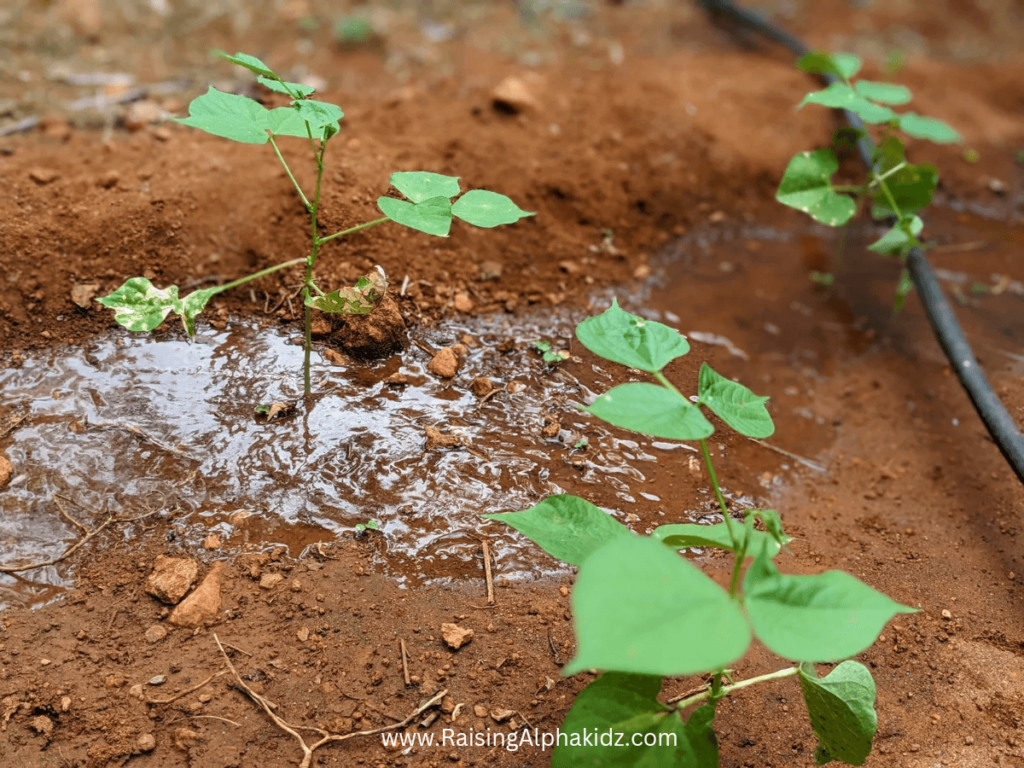
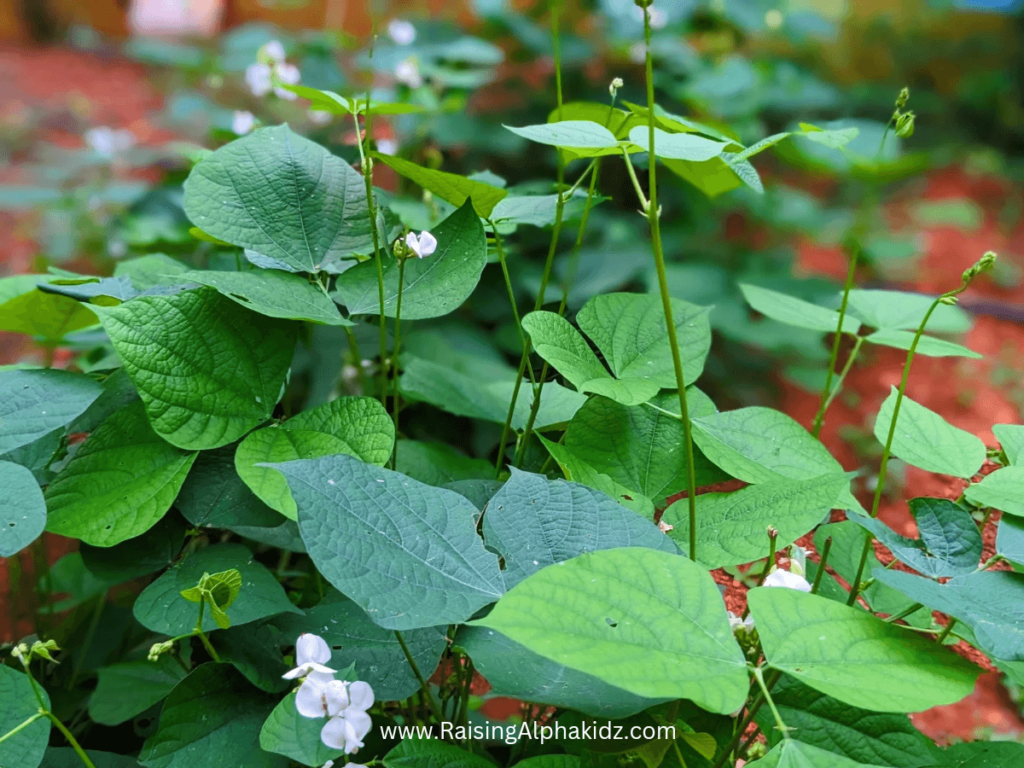
Source: Gardening Activities For Kids
- Recycling Projects: Create art from recyclable materials.
- Gardening: Grow vegetables or flowers, teaching about plant life cycles.
- Water Conservation: Implement practices like turning off taps while brushing teeth.
- Energy Saving: Encourage turning off lights when not in use.
- Upcycled Planters (old boots or jars!)
- Rainwater Harvesting (collect water for plants)
Teaching Sustainability For Kids with kitchen compost project isn’t just about dirt and worms—it’s a gateway to raising eco-heroes! By involving kids in every step, from sorting scraps to mixing the pile, you’re planting seeds of curiosity and care for the Earth. Ready to get your hands dirty? Let’s compost!
By involving children in sustainable practices, we equip them with the knowledge and skills to make environmentally responsible choices, fostering a generation committed to preserving our planet.

